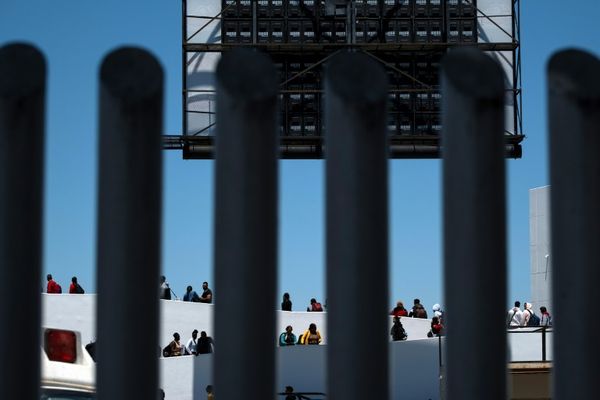Evidence of Tim Pickles' crimes is everywhere in Campbelltown — red autumn leaves outside the hospital, shade for cars and pedestrians, a forest at his sons' school.
He has planted more than 100 trees on nature strips, in car parks and schools in south-western Sydney — almost all without permission and often without anyone noticing.
"The trick is to make it look like it's always been there," the qualified horticulturist says.
He puts two stakes around the young trees, mimicking the council's approach, and waters them weekly until they are established.
Mr Pickles, who runs a popular nursery in Campbelltown, is yet to get in trouble for his rogue plantings.
"I don't really promote that I plant the trees until they're 3 metres high," he said.
"By that time, you know, they're not going to say anything because they can see how beautiful they are."
In order to maintain his unauthorised additions, Mr Pickles sticks to areas he visits regularly.
"When my son got piano lessons, I noticed the park next door to where he got his piano lessons had one tree in it. So I planted six trees there," he said.
It began when Mr Pickles' sons were born a year apart at Campbelltown Hospital and he noticed the car park was bare.
"It made me feel unwell," he told ABC Radio Sydney.
"So I went in there one Sunday and I planted 12 Manchurian pear trees."
That was the first and last time he asked for permission before digging.
"[The hospital] said that'd be great, but nothing that grows taller than 3 metres," he said.
"I thought that was not a tree at all, and I planted the trees of my choice … trees that I knew would look beautiful."
Mr Pickles's sons are now 18 and 19 years old and two of the hospital trees remain — the others grew for 15 years before they had to make way for a hospital redevelopment.
"The two trees that are left are absolutely magnificent, 6 metres high, 6 metres wide. And they bring so much joy to me and I'm sure they bring so much joy to other people," he said.
Nature strip bans 'crazy'
While some councils have relaxed the rules to accommodate so-called guerilla gardeners, planting trees on nature strips remains banned in most places — much to Mr Pickles's frustration.
"It's absolutely crazy that people aren't allowed, legally, to plant a tree on their own nature strip. I mean it's out the front of your house, you're going to look after it," he said.
He suggests councils provide a list of suitable trees and advice to residents about where to plant and how to look after it.
Campbelltown City Council instead invites residents to request a tree which their staff can plant.
A council spokesperson said 247 trees had been planted on nature strips at the request of residents since 2020.
"Council carefully considers requests for tree planting on nature strips and selects locations to ensure the safety of pedestrians and essential services are not disrupted," the spokesperson said.
Mr Pickles has possibly got away with his illegal greening for so long because the area on Sydney's fringe is desperately in need of more trees.
Some suburbs in the region have as little as 6 per cent canopy coverage, according to aerial surveys conducted last year by ArborCarbon.
Bow Bowing, a housing estate with 350 properties which opened in 1990, had the least number of trees while Englorie Park, Bardia and Rosemeadow also scored less than 10 per cent canopy coverage.
The data was commissioned by the Campbelltown City Council, which is developing an urban greening plan to address the deficit.
"Increasing our tree canopy will take a whole of community approach that will require the involvement of private property owners and our parks and reserves," Mayor George Greiss said.







